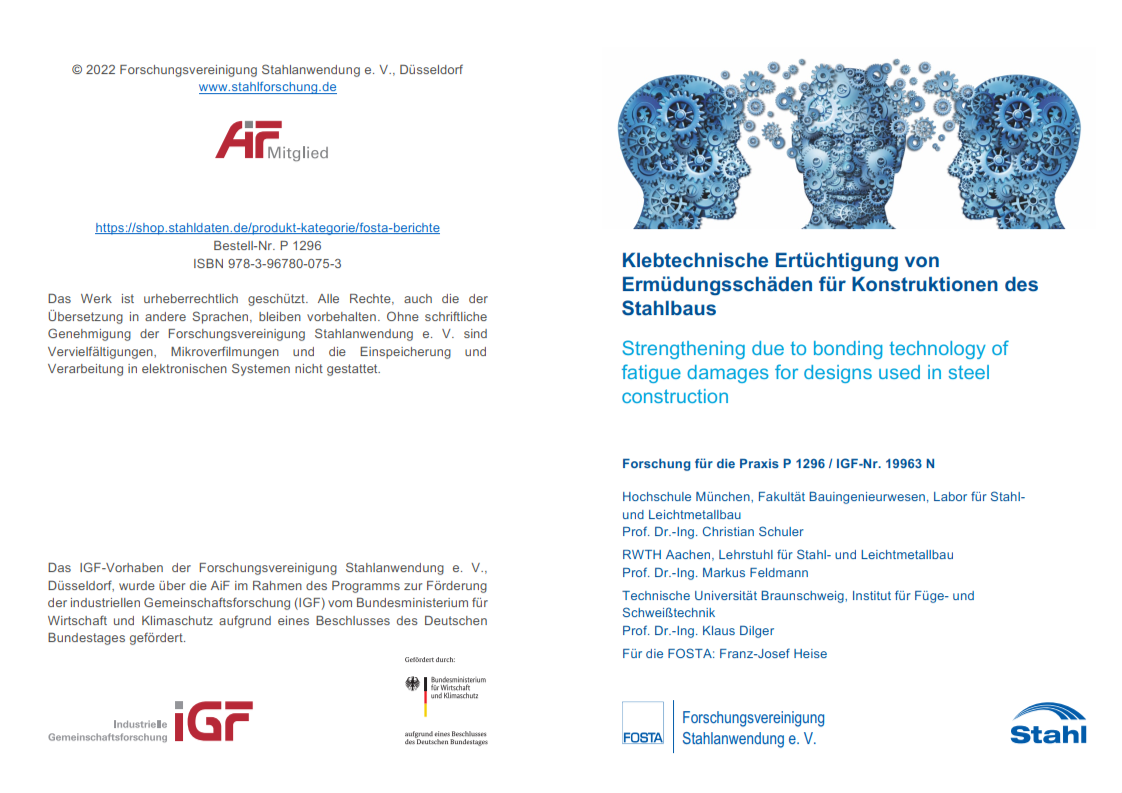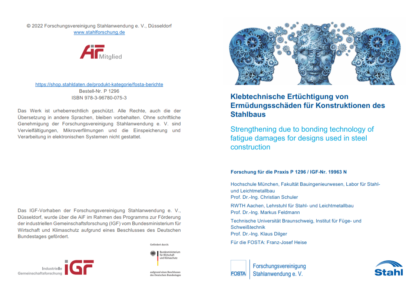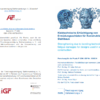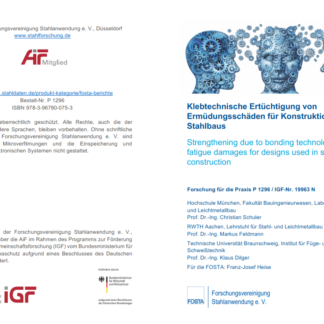Description
P 1296 – Strengthening due to bonding technology of fatigue damages for designs used in steel construction
In steel construction, unforeseen fatigue damage can occur in structures subjected to cyclic loads, making repair measures necessary. Adhesive bonding technology is a promising alternative to the traditional strengthening methods. The aim of the research project was therefore the development and analysis of concepts for the adhesive reinforcement of fatigue damage through the use of bonded “steel patches” for steel structures, considering defined site-specific conditions of use.
Within the framework of the completed research project StressPatches, the strengthening of typical steel structure notch details by means of bonded steel patches was investigated. For this purpose, the boundary conditions as well as strain rates from real bridge stresses, component tolerances and loads on the bond from the environment were first determined. Based on a specification sheet, more than ten adhesives were identified and provided by the industry, which were investigated in initial tests with regard to processability and final properties. Based on these results, two cold-curing epoxy resin adhesives and one polyurethane adhesive were selected for further investigation and validated in tests on pre-treatment options, curing behaviour under ambient conditions and accelerated curing.
The rehabilitated notch details with patching were then tested experimentally using quasi-static and cyclic small component, component and large component tests. Analytical and numerical investigations served for parameter identification, recalculation and optimisation of the tests as well as for the derivation of a (pre-)design concept. During the production of the samples, it became clear that un-supporting assembly aids will be necessary for the joining of the components, which will have to be developed in the future.
Furthermore, the potential of the use of fibre-optic sensors in relation to structural monitoring was demonstrated. On the basis of the adhesives in focus, various manufacturing concepts and process sequences were then considered and discussed, and the options were also considered in the economic evaluation. In view of all the results, a pre-dimensioning concept was drawn up. It was shown that bonding steel sheets to a bridge structure has the potential to significantly limit the development of possible damage in the form of cracks. These results are now available to SMEs in the engineering services and planning sectors. At the same time, there is a need for further research to enable implementation on real structures. To this end, a further research application was submitted and has already been approved, as well as a ZIM project.
Published in:
2022
Authors:
Prof. Dr.-Ing. Ch. Schuler, Prof. Dr.-Ing. M. Feldmann, Prof. Dr.-Ing. K. Dilger




